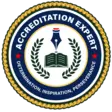
Introduction
Higher education institutions are under increasing pressure to achieve strong job placement outcomes. With over 20 years of experience in accreditation consulting and leadership within multiple accreditation agencies, we have observed the challenges institutions face in ensuring their graduates are workforce-ready. The obstacles to maintaining robust job placement rates extend beyond academic rigor; they include industry alignment, investment in career services, economic fluctuations, and access to networking opportunities. Overcoming these barriers is crucial for institutional credibility, compliance with accreditation standards, and student success.
Related Article: Why Job Placement Rates Matter in Higher Education
Misalignment with Job Market Demands
One of the most significant obstacles to achieving high job placement rates is the disconnect between academic programs and evolving job market needs. Many institutions still offer curricula that emphasize theoretical knowledge over practical skills required by today’s employers.
Key Insight :
A 2022 McKinsey study revealed that 40% of employers believe recent graduates are unprepared for the workforce due to shortcomings in critical thinking, digital literacy, and problem-solving skills.
Strategies to Bridge the Gap :
✅ Partner with industry leaders to align curricula with workforce needs.
✅ Incorporate hands-on training through internships, co-op programs, and real-world projects.
✅ Regularly update programs to include emerging technologies such as AI, data analytics, and automation.
Further Reading: Higher Education Accreditation Process

Limited Career Services
Effective career services play a crucial role in enhancing job placement rates; however, many institutions struggle to provide adequate support due to financial constraints and understaffing.
Did you know ?
Only 55% of students utilize their institution’s career services, according to a report from the National Association of Colleges and Employers (NACE).
Best Practices for Strengthening Career Services:
✅ Increase funding and staffing for career support offices.
✅ Implement career development courses within degree programs.
✅ Establish mentorship programs connecting students with industry professionals.
✅ Expand employer outreach to facilitate internships and job placements.
Explore More: Vocational School Accreditation
Economic Fluctuations and Employment Challenges
Recessions, hiring freezes, and industry disruptions significantly impact job placement rates. For example, during the COVID-19 pandemic, U.S. unemployment rates soared to 14.7%, affecting recent graduates across multiple industries.
How Institutions Can Adapt:
✅ Encourage students to explore resilient industries like healthcare, technology, and logistics.
✅ Strengthen employer relationships to create internship-to-job pipelines.
✅ Provide training for alternative career pathways like freelancing, entrepreneurship, and remote work.
✅ Use data analytics to track labor market trends and adjust programs accordingly.
Related Guide: Accreditation Bureau Site Visit
Lack of Networking Opportunities
Networking is a critical factor in job acquisition, yet many students lack access to professional networks. Studies show that as many as 85% of job openings are filled through personal and professional connections rather than direct applications.
How to Improve Networking Opportunities for Students:
✅ Create structured networking initiatives like alumni mentorship programs.
✅ Foster partnerships with professional organizations and industry leaders.
✅ Incorporate professional networking platforms like LinkedIn into career services.
✅ Host industry panels and job fairs to connect students with employers.
Helpful Resource: Higher Education Strategic Planning

How Accreditation Expert Consulting Can Help
At Accreditation Expert Consulting, we specialize in helping institutions navigate the complex challenges of job placement success. Our 20+ years of experience in accreditation leadership have enabled us to support numerous institutions in enhancing graduate employability, aligning academic programs with workforce needs, and improving career services.
Our Expertise Includes:
✅ Accreditation Readiness and Compliance – Ensuring institutions meet job placement tracking and reporting requirements.
✅ Strategic Program Alignment – Conducting industry analyses to help institutions update curricula with workforce-relevant skills.
✅ Career Services Enhancement – Developing strong career service programs to boost job placement rates.
✅ Employer Partnership Development – Establishing employer connections for internships, apprenticeships, and direct hiring opportunities.
✅ Data-Driven Decision-Making – Implementing analytics tools to track job placement trends and optimize student career support.
For more insights, visit: Why Job Placement Rates Matter in Higher Education
What’s Next? (Stay Tuned for Part 3!) In the final part of this series, we’ll explore actionable strategies for institutions to further enhance job placement success, measure performance metrics effectively, and increase student career readiness.
Want to improve job placement outcomes at your institution? Contact us today!
🌐 Visit: accreditationXpert.com | ✉ Email: Info@accreditationXpert.com




